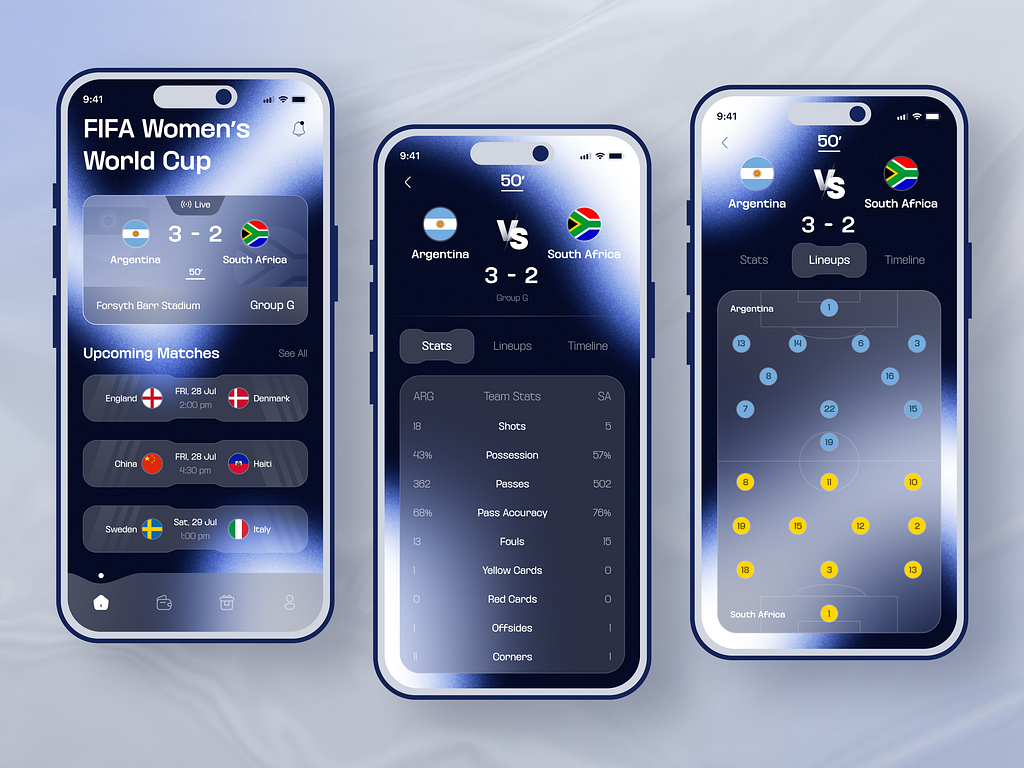
From Concept to Reality: Your Complete Guide to Creating a Winning Fantasy App
Creating a fantasy app is a journey that combines creativity, technology, and strategic planning. Whether you’re envisioning a captivating game, an immersive storytelling experience, or an interactive fantasy world, the path from idea to launch involves several critical steps. In this comprehensive guide, we’ll explore the essential phases of developing a successful fantasy app, from initial concept to market debut.
1. Conceptualization: From Vision to Blueprint
Define Your Vision
The first step in developing a fantasy app is to crystallize your vision. What kind of fantasy world do you want to create? Are you focusing on a game, an interactive story, or an augmented reality experience? Establishing a clear vision will guide all subsequent decisions.
Key Considerations:
- Target Audience: Who are you creating this app for? Understanding your audience will help tailor the app’s features and design.
- Core Concept: What sets your app apart from existing fantasy apps? Define your unique selling proposition.
Create a Detailed Concept Document
Document your ideas thoroughly. This concept document should include:
- Game Mechanics: Rules and systems if you’re creating a game.
- Storyline: Plot, characters, and world-building elements.
- Features: Key functionalities and interactions.
- Technical Requirements: Platforms, tools, and technologies you plan to use.
2. Design: Crafting the User Experience
Wireframing and Prototyping
Develop wireframes to outline the basic structure and flow of your app. Create prototypes to visualize and test user interactions and interface design. Tools like Figma, Sketch, or Adobe XD can be invaluable in this stage.
Key Components:
- User Interface (UI) Design: Design intuitive and visually appealing interfaces.
- User Experience (UX) Design: Focus on how users will interact with your app and ensure a seamless experience.
Art and Animation
Fantasy apps thrive on captivating visuals. Collaborate with artists and animators to create:
- Concept Art: Visual representations of characters, environments, and key elements.
- Animations: Smooth and engaging animations that bring your fantasy world to life.
3. Development: Building the Fantasy World
Choosing the Right Technology Stack
Select the technology stack based on your app’s requirements:
- Game Engines: Unity and Unreal Engine are popular choices for game development.
- AR/VR Frameworks: ARKit, ARCore, and other frameworks are essential for augmented and virtual reality experiences.
- Backend Technologies: Determine server requirements and choose appropriate backend solutions.
Coding and Implementation
Develop the core functionalities of your app. This includes:
- Frontend Development: Building the user-facing elements.
- Backend Development: Creating databases, servers, and APIs.
- Integration: Combining various components and ensuring they work harmoniously.
Testing and Quality Assurance
Conduct rigorous testing to identify and fix bugs and ensure that your app performs well under different conditions.
- Functional Testing: Verify that all features work as intended.
- Usability Testing: Ensure that the app is user-friendly and intuitive.
- Performance Testing: Test for speed, responsiveness, and stability.
4. Marketing and Promotion: Building Anticipation
Develop a Marketing Strategy
Create a comprehensive marketing plan to build excitement and attract potential users:
- Branding: Develop a strong brand identity, including a logo, color scheme, and style guide.
- Website and Social Media: Build a website and establish a presence on social media platforms to engage with your audience.
- Content Marketing: Produce blogs, videos, and other content to generate interest and provide updates.
Beta Testing and Feedback
Release a beta version of your app to a select group of users. Gather feedback to refine and improve the app before the official launch.
5. Launch: Going Live
Prepare for Launch
Finalize all preparations for a successful launch:
- App Store Submission: Ensure your app meets the guidelines for platforms like the Apple App Store or Google Play.
- Marketing Campaign: Execute your marketing strategy to maximize visibility and attract users.
Post-Launch Activities
After launch, focus on maintaining and growing your user base:
- Monitor Performance: Track metrics such as downloads, user engagement, and feedback.
- Update and Improve: Regularly update your app with new features, bug fixes, and improvements based on user feedback.
- Engage with Users: Maintain an active presence in user communities and provide excellent customer support.
Conclusion
Developing a successful fantasy app is a multi-faceted process that requires creativity, careful planning, and technical expertise. By following these steps—from conceptualization and design to development, marketing, and launch—you can transform your vision into a captivating and engaging fantasy experience.
Remember, the journey doesn’t end with the launch. Ongoing engagement, updates, and user support are crucial to sustaining and growing your app’s success. Embrace the adventure, and let your fantasy world enchant users far and wide!
Have questions or insights about the app development process? Share them in the comments below. What challenges or successes have you encountered in your journey from idea to launch?
In conclusion, a fantasy app development company transforms imaginative ideas into immersive, interactive experiences using cutting-edge technology. Their expertise in design, development, and ongoing support ensures the creation of engaging fantasy worlds that captivate users. Partnering with such a company is key to turning visionary concepts into successful apps.





